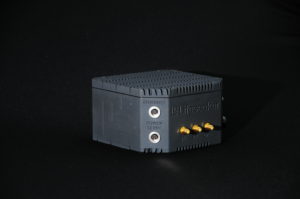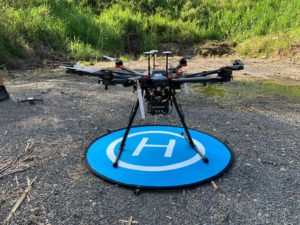
Search and rescue drones have been used for several years now, and are incredibly effective at finding missing persons. Using thermal imagery, searches for missing persons can continue in the dark and under ever more challenging conditions.
This new search and rescue drone solution covers scenarios when even thermal imaging can’t help. Lifeseeker is an airborne system that can locate mobile phones, even without network coverage. The new technology marries cell phones signals to search and rescue missions using either helicopters or a smaller version appropriate for drones. The solution turns the mobile phone into a beacon capable of leading rescue teams to its location. The tool has tremendous potential for saving lives in disasters such as earthquakes, when people may be buried under rubble or earth; or in the case of avalanche. It would also be effective in finding people hidden under dense canopy, such as in a jungle.
While a larger version of Lifeseeker is available for helicopter, the smaller version for drones means that search and rescue operations may take place not only more cheaply, but in conditions during which helicopters would be grounded: in low visibility, adverse weather conditions, and at night. Lifeseeker is produced by Spanish company Centum and marketed in Asia by Drone Solutions Services, a privately held company out of Singapore, as well as other companies worldwide.

“The product locates missing people using their mobile phones as beacons to give their exact location. It does not require collaboration with the missing person to be able to locate them. It requires no collaboration of the service providers at any point in the process and is not bounded by the type of network in place as it works in 2G, 3G, 4G and no signal areas. It also has the ability to act as a communication relay between the missing person and the rescue team,” says the company.

Cell phone data has been in the news recently as a data source for coronavirus tracking. This data is utilized for tracking large amounts of people over time: it can determine, for example, where students may go after a spring break vacation in Florida.
Search and rescue is one of the most effective “drones for good” applications, accounting for many of the lives saved by drone technology. Manufacturer DJI keeps records of lives saved by drones as part of the company’s “Drones for Good” efforts.

Miriam McNabb is the Editor-in-Chief of DRONELIFE and CEO of JobForDrones, a professional drone services marketplace, and a fascinated observer of the emerging drone industry and the regulatory environment for drones. Miriam has penned over 3,000 articles focused on the commercial drone space and is an international speaker and recognized figure in the industry. Miriam has a degree from the University of Chicago and over 20 years of experience in high tech sales and marketing for new technologies.
For drone industry consulting or writing, Email Miriam.
TWITTER:@spaldingbarker
Subscribe to DroneLife here.







[…] have become a critical tool for search and rescue operations, because they can cover a large area quickly. Operators seek missing persons through cell phone […]